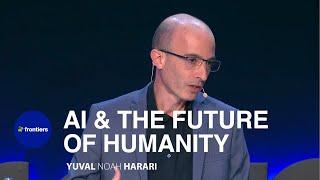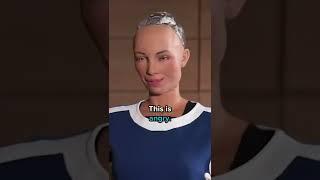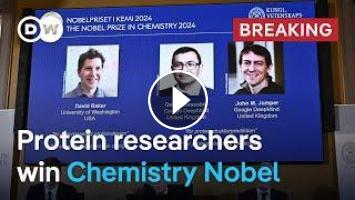David Baker, Demis Hassabis and John M. Jumper have been awarded the Nobel Prize in Chemistry for their research into computational protein design and protein structure prediction.
"This research is a landmark moment, as it was considered impossible for years to predict the structures of proteins," said the Chair for the Nobel Committee for Chemistry, Heiner Linke, who also explained how proteins serve as building blocks of all bodily functions.
Proteins are made-up of strings of amino acid molecules, which then form complex sequences. These sequences help read, copy and repair DNA. DNA, or deoxyribonucleic acid, is a molecule that contains the genetic code that is unique to every individual.
Avancements in artificial intelligence (AI) and machine learning, for which the 2024 Physics Nobel Prizes were awarded, also helped Baker, Hassabis and Jumper with their research.
Baker and his fellow laureates cracked the code of what protein structures may look like with the help of AI.
"They used neural networks and deep learning to train a database that then showed how close two amino acid structures were to each other in space," said Johan Aqvist, a member of the Nobel Committee for Chemistry.
"These proteins consist of hundreds of thousands of atoms that are responsible for every biochemical function in the body," Linke added.
#ai #chemistry #nobelprize
Subscribe: https://www.youtube.com/user/deutschewelleenglish?sub_confirmation=1
For more news go to: http://www.dw.com/en/
Follow DW on social media:
►Facebook: https://www.facebook.com/deutschewellenews/
►Twitter: https://twitter.com/dwnews
►Instagram: https://www.instagram.com/dwnews
►Twitch: https://www.twitch.tv/dwnews_hangout
Für Videos in deutscher Sprache besuchen Sie: https://www.youtube.com/dwdeutsch
"This research is a landmark moment, as it was considered impossible for years to predict the structures of proteins," said the Chair for the Nobel Committee for Chemistry, Heiner Linke, who also explained how proteins serve as building blocks of all bodily functions.
Proteins are made-up of strings of amino acid molecules, which then form complex sequences. These sequences help read, copy and repair DNA. DNA, or deoxyribonucleic acid, is a molecule that contains the genetic code that is unique to every individual.
Avancements in artificial intelligence (AI) and machine learning, for which the 2024 Physics Nobel Prizes were awarded, also helped Baker, Hassabis and Jumper with their research.
Baker and his fellow laureates cracked the code of what protein structures may look like with the help of AI.
"They used neural networks and deep learning to train a database that then showed how close two amino acid structures were to each other in space," said Johan Aqvist, a member of the Nobel Committee for Chemistry.
"These proteins consist of hundreds of thousands of atoms that are responsible for every biochemical function in the body," Linke added.
#ai #chemistry #nobelprize
Subscribe: https://www.youtube.com/user/deutschewelleenglish?sub_confirmation=1
For more news go to: http://www.dw.com/en/
Follow DW on social media:
►Facebook: https://www.facebook.com/deutschewellenews/
►Twitter: https://twitter.com/dwnews
►Instagram: https://www.instagram.com/dwnews
►Twitch: https://www.twitch.tv/dwnews_hangout
Für Videos in deutscher Sprache besuchen Sie: https://www.youtube.com/dwdeutsch
- Category
- Artificial Intelligence
- Tags
- DW News, Chemistry Nobel Prize, Nobel












Comments